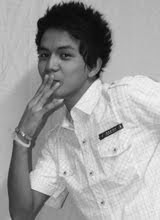
(Vol. XXVI No. 9, Editorial Cartoon)
Ang wika ay kaluluwa ng isang bansa. Bawat bansang malaya ay may kanya-kanyang wika. Ang Pilipinas, na itunuturing na isa sa mga ito, ay may sarili ring wika. Ito ay ang Wikang Filipino.
Iilang buwan na rin ang nakalipas nang ipagdiwang ng Negros Oriental State University (NORSU) ang Buwan ng Wika. Sa halip na buwanang pagdiriwang, ito ay idinaos sa loob ng isang araw na lamang noong ika-20 ng Agosto sa pamamagitan ng mga patimpalak gaya ng comical skit at katutubong sayaw. Naging matagumpay man ang paggunita ng unibersidad sa Buwan ng Wika, hindi pa rin natin maitatanggi na ang pagdiriwang ngayon ay payak na lamang kung ihahambing noong mga nakaraang taon. Naging kasiya-siya man ang ginawang selebrasyon, hindi naman ito naging sapat upang lubusang tumatak sa isipan ng lahat ang nais ipahiwatig ng pagdiriwang. Noong mga nagdaang taon, hindi maipagkakailang mas masaya at mas pinaghandaan ang pagdiriwang ng Buwan ng Wika dito sa NORSU. Iilan sa mga pinaghandaang palatuntunan na itinampok noon ay ang paligsahan sa pagkukwento, madulang sayaw, talumpati, sabayang pagbigkas, at katutubong sayaw. Noon ay mayroon ding mga dulang may iisang yugto, at may ginawang pagpili ng Lakan at Lakambini ng Wika. Mayroon pa ngang tabo sa banay at mga paligsahan sa katutubong laro na noo’y nilahukan ng mga mag-aaral. Mapapansing habang lumilipas ang panahon ay unti-unting nawawalan ng tingkad ang dating makulay na selebrasyon. Bakit unti-unting nagiging tahimik ang dati’y siksik na siksik sa saya na pagdiriwang ng Buwan ng Wika? Bakit mula sa mahabang hanay ng mga palatuntunan noon, dalawa o tatlong programa na lamang ang natira? Hindi naman natin masisisi ang Departamento ng Filipino dahil makatarungan naman ang kanilang mga dahilan kung bakit naging simple na lamang ang pagdiriwang ng Buwan ng Wika ngayong taon. Ang kawalan ng badyet, ay isa sa mga pangunahing dahilan. Ang mas magarang selebrasyon ay mangangahulugang mas malaki ang perang magagamit, na mangangahulugan ding mas mabigat para sa bulsa ng mga estudyanteng kumukuha ng asignaturang Filipino ang gagawing paggunita. Pangalawa, maaantala ang klase kung gagawing mas matagal ang selebrasyon. Tama nga naman– naging praktikal lamang ang departamento na isipin ang kapakanan ng mga estudyante. Ngunit sa kabilang banda, hindi natin maiiwasang magtanong: Paano naman natin bubuhayin ang unti-unti nang namamatay na larawan ng wika at kulturang Pilipino kung hindi naman natin magawang ipadama sa mas nakakaraming estudyante ang tunay na diwa ng selebrasyon? Paano mararamdaman ng mga mag-aaral ang nais ipahiwatig ng pagdiriwang kung hindi nga nila halos mapansin? Mayroon ngang nanood sa payak na pagdiriwang ngunit hindi pa rin maitatangging mas marami ang nagsawalang bahala dito. Hindi ba maaaring pagsabayin ang pagtitipid at ang isang matingkad na pagdiriwang? Wala na bang paraan upang maibalik ang dating nakaka-agaw pansin na pagdiriwang na hindi magiging mabigat sa bulsa ng mga estudyante at hindi nakakaantala sa kanilang mga klase? Sa panahon ngayon, hindi na nga ba praktikal ang magdaos ng isang magarbo at makulay na Buwan ng Wika? Sana ay maari pa. Sana ay may paraan pa. Bakit? Dahil ang isang maingay, matingkad at makabuluhang pagdiriwang ang siyang pupukaw sa damdamin ng mga mag-aaral– damdaming dapat pahalagahan ang tunay na kabuluhan ng kultura at wikang Filipino. | ||












